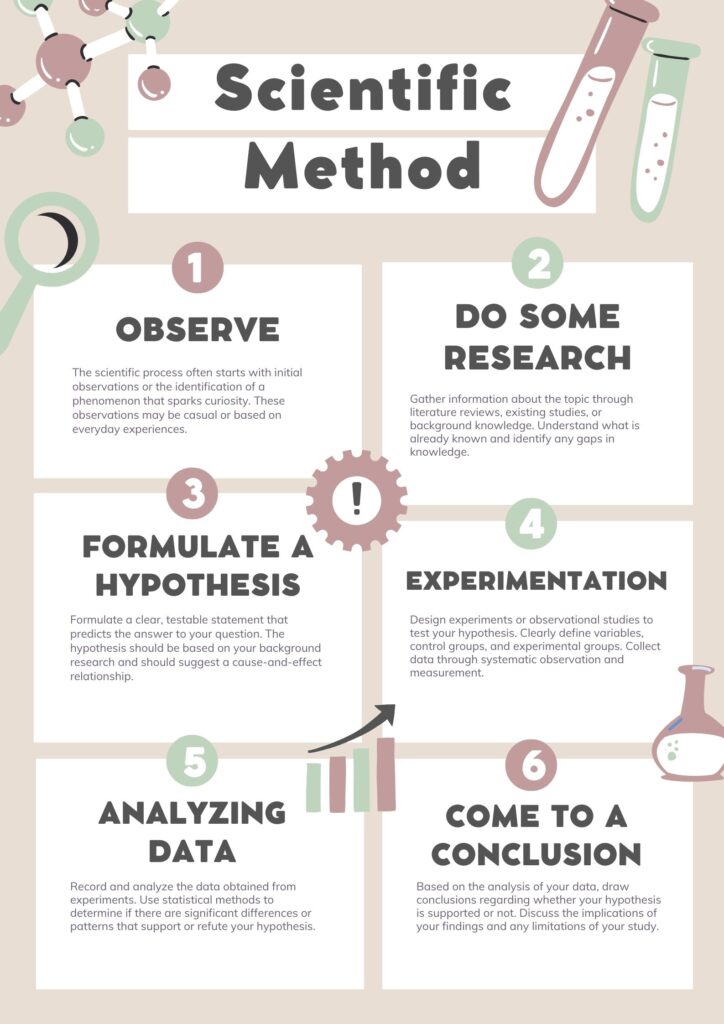The scientific method is a systematic, logical approach that scientists use to investigate natural phenomena. It involves a series of steps that help researchers answer questions and solve problems through empirical evidence and experimentation. The scientific method is not a linear process; scientists often iterate through these steps as they refine their understanding of a phenomenon. Here are the general steps of the scientific method:

1. Ask a Question:
- Begin by asking a question about a natural phenomenon or a problem you want to solve. Make sure your question is specific and testable.
2. Background Research:
- Gather information about the topic through literature reviews, existing studies, or background knowledge. Understand what is already known and identify any gaps in knowledge.
3. Construct a Hypothesis:
- Formulate a clear, testable statement that predicts the answer to your question. The hypothesis should be based on your background research and should suggest a cause-and-effect relationship.
4. Conduct Experiments:
- Design experiments or observational studies to test your hypothesis. Clearly define variables, control groups, and experimental groups. Collect data through systematic observation and measurement.
5. Collect and Analyze Data:
- Record and analyze the data obtained from experiments. Use statistical methods to determine if there are significant differences or patterns that support or refute your hypothesis.
6. Draw Conclusions:
- Based on the analysis of your data, draw conclusions regarding whether your hypothesis is supported or not. Discuss the implications of your findings and any limitations of your study.
7. Communicate Results:
- Share your results with the scientific community and the public. Publish your findings in scientific journals, present them at conferences, or communicate them through other means. Transparency and open communication are crucial in the scientific process.
8. Peer Review:
- Allow other scientists to review and replicate your study. Peer review ensures that your methods are sound, your results are valid, and your conclusions are reasonable. It is a critical step in maintaining the integrity of scientific research.
9. Refine and Repeat:
- If your results are inconclusive or if new questions arise, refine your hypothesis and repeat the process. The scientific method is an ongoing, iterative process that contributes to the cumulative growth of scientific knowledge.
The scientific method provides a structured and objective approach to inquiry, allowing scientists to gain a deeper understanding of the natural world. It is a dynamic and self-correcting process that encourages curiosity, critical thinking, and evidence-based reasoning.

No responses yet